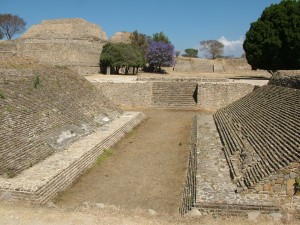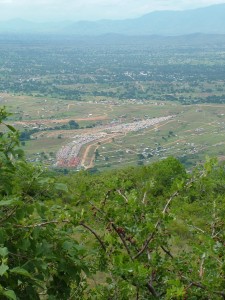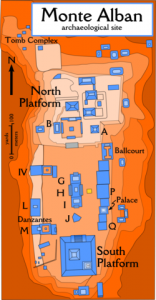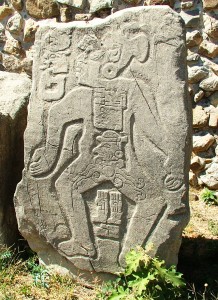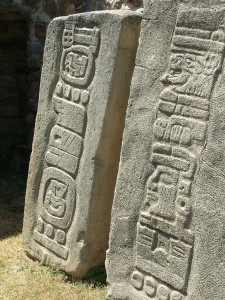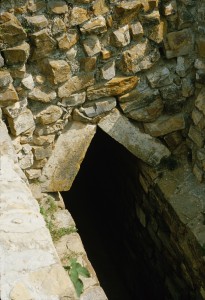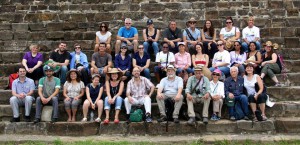Monte Albán, declared a World Heritage site by the United Nations in 1987, is an archaeological site with a Spanish-colonial name. Occupied for more than thirteen centuries (500 B.C.E. to 850 C.E.), this spectacular ruined city sits atop a mountain six miles west of the modern city of Oaxaca. It has a 360-degree view of the valleys below.
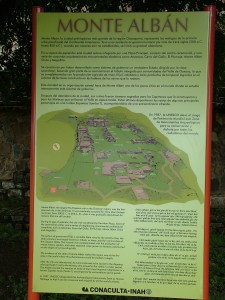
Multilingual introduction to Monte Albán, a sign in Spanish, English, and Zapotec (R. Haskett, 2005)
Monte Albán was one of the earliest cities of Mesoamerica, founded in about 500 B.C.E., and came to preside over an imperial dominion that took in vast highland regions by about 100 B.C.E. to 200 C.E. This polity, ruled by the Zapotecs, had contact with other Mesoamerican states such as Teotihuacan, near what is now Mexico City. Like many other Classic era cities, it was largely abandoned by the Late Classic period (ca. 750 C.E.), but it did see some occasional re-occupation and re-utilization of the abandoned buildings and tombs, and there were ritual visitations into the Spanish period.
Monte Albán features impressive architectural remains, tombs of rulers, stone carvings, and examples of glyphic Zapotec writing.
Stelae 12 and 13 from Monte Albán show glyphic Zapotec writing with calendrical references that are believed to be among the oldest in Mesoamerica.
Video Clips
- Monte Albán (by Gabriela Martínez), http://www.youtube.com/watch?v=4ZJ-6RBJ9ds (from March 2010)

